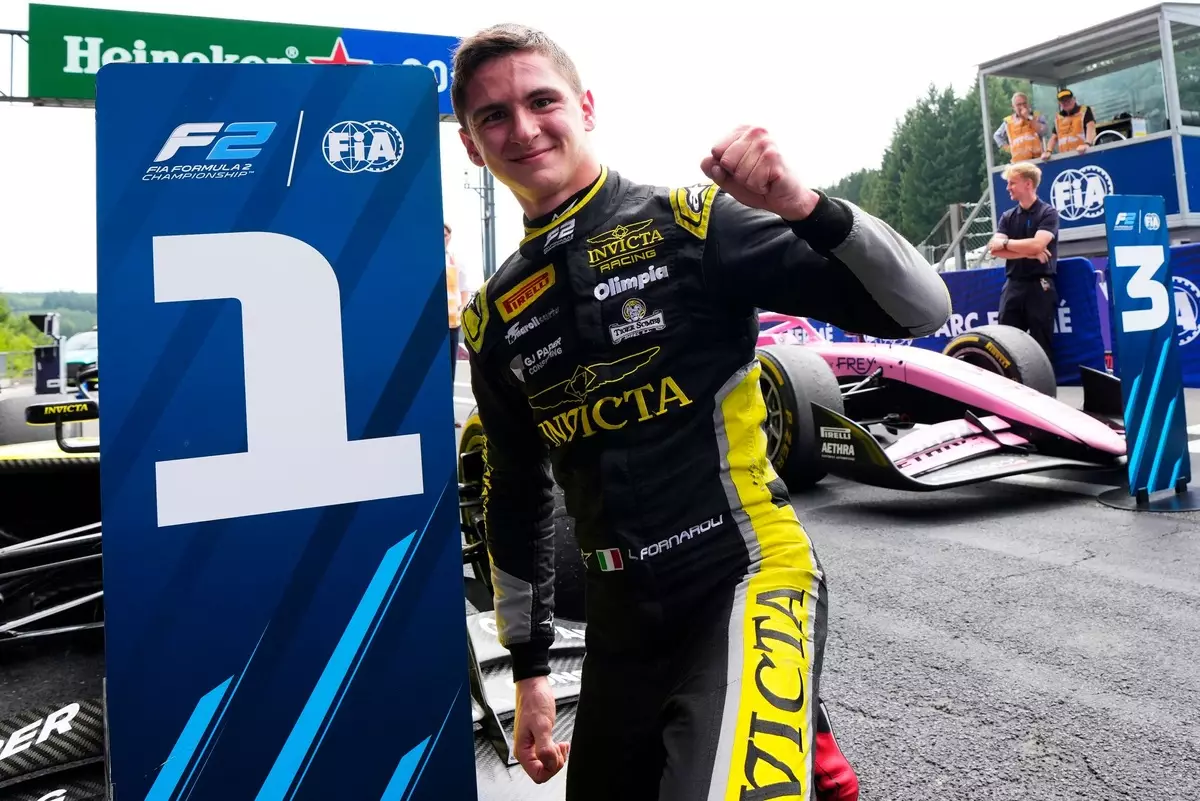In the high-octane world of motorsport, where talent often equates to fame and recognition, Leonardo Fornaroli emerges as an anomaly—an exceptional driver whose brilliance remains largely obscured by the glittering spotlight of Formula 1’s glitz. This paradoxical situation raises profound questions about how talent is identified, nurtured, and rewarded in modern racing. Despite leading the current Formula 2 championship in his debut year—a feat in itself—Fornaroli remains unaffiliated with any F1 development program. This rare occurrence signals a deeper flaw in the talent pipeline: current scouting and development systems seem to overlook extraordinary drivers who do not conform to the flamboyant, media-savvy archetype.
Fornaroli’s story is more than just an impressive statistic; it challenges our conventional understanding of potential. His championship success, achieved without the backing of a prominent F1 academy, paints a picture of a raw, unpolished talent—one that’s underestimated precisely because of his understated demeanor and unconventional rise. Such a narrative highlights the danger of over-relying on institutional pathways that favor media personas over genuine skill and consistency. If the sport’s talent identification system remains myopic, it risks ignoring future stars who are not immediate headline makers but possess the core qualities F1 teams desperately need: reliability, execution, and calm under pressure.
Contradictions and Unspoken Opportunities in Talent Scouting
Unlike many of his peers, Fornaroli’s pathway to prominence has sidestepped the traditional F1 academy system. This deviation invites critics and insiders alike to question the efficiency and fairness of current development programs. While many drivers are promoted based on marketing potential or early hype, Fornaroli’s rise underscores a more compelling truth: consistent performance, strategic execution, and mental resilience are often undervalued in favor of personality-driven narratives.
The exceptional performance of recent F3 champions, such as Gabriel Bortoleto, further complicates this landscape. Bortoleto, with his seamless transition from F3 to F2 and into F1 with Sauber, exemplifies a more predictable trajectory—championship success culminating in F1 support. Yet, Fornaroli’s journey stands as a stark reminder that not all drivers follow this script. His ability to stabilize and improve his form over seasons, winning races without a prior winning record in earlier categories, indicates a maturity and adaptability that could revolutionize how teams identify valuable prospects.
Fornaroli’s case exemplifies the limitations of current scouting paradigms. Instead of valuing long-term consistency, many teams chase transient hype, overlooking drivers who excel in maintaining performance over peaks and valleys. This “Moneyball” approach, a term borrowed from baseball’s unconventional assembling of a competitive team, could serve as a blueprint for F1 teams anxious to discover hidden gems. The implication is clear: talent isn’t solely about dramatic overtakes or social media presence. Instead, it hinges on operational mastery—steadiness, precise execution, and mental fortitude—traits Fornaroli embodies.
Beyond the Obvious: The Power of Quiet Excellence
What makes Fornaroli truly intriguing is his understated personality—a trait that, while perhaps dull in the eyes of headline writers, actually epitomizes the driver that teams crave. His composure during races, his relentless consistency, and his ability to execute race strategies flawlessly position him as an invaluable asset in the complex machinery of F1 development. Robinson’s description of Fornaroli as a “Moneyball” driver is not just a marketing catchphrase; it encapsulates a fundamental truth about what modern teams need to succeed, particularly as F1 leans into data-driven development.
Consider Robinson’s vivid example from the Spa sprint race, where Fornaroli’s unwavering focus and disciplined lap-after-lap effort allowed him to secure a dominant victory against highly competitive rivals. This portrayal underscores that success in motorsport isn’t solely about raw speed or aggressive overtakes; it’s rooted in mental clarity, patience, and technical execution—areas where Fornaroli excels. His ability to perform reliably under pressure, even when circumstances are volatile, is a rare but highly sought-after trait, especially as F1 continues its push toward engineering-driven precision.
Furthermore, Fornaroli’s journey illustrates a profound lesson: the most resilient and capable drivers aren’t always those who shout the loudest or claim the spotlight early. His emergence as a top contender without the usual backing prompts a necessary reevaluation of how talent is cultivated and recognized. It suggests that teams should broaden their horizons beyond the usual pathways, embracing a more holistic and data-informed approach in talent scouting—a shift that could reshape the future landscape of F1 driver selection.
The Stark Reality of Missed Opportunities
Robinson’s candid critique reflects a baffling reality: in many cases, the best drivers are passed over in favor of those who are more marketable, more media-friendly, or simply more visible. The glaring irony is that Fornaroli, whose talent and consistency shine through, remains on the fringes of F1 consideration. This oversight isn’t merely a missed opportunity for teams—it’s a fundamental misjudgment of what constitutes true racing excellence.
The implications extend beyond one driver’s career. If teams continue to overlook drivers like Fornaroli, they risk awarding their future success to personalities rather than talent and strategic fit. The current talent pipeline, heavily dependent on marketing appeal and affiliations, could inadvertently stifle genuine potential, leaving the sport bereft of athletes who possess the qualities necessary for sustained excellence.
In a sport that increasingly relies on minute data points, technological innovation, and mental resilience, Fornaroli embodies the ideal prototype. His journey challenges organizations to re-examine their biases, to recognize that the most valuable drivers might not be the most ostentatious but those who quietly and consistently deliver, race after race.
The question remains: will F1’s scouts and teams recognize this burgeoning talent before it’s too late? As Robinson poignantly notes, it’s “mind-blowing” that such a driver is still waiting in the wings while the sport continues to chase more visible, but not necessarily more capable, prospects. What F1 could be missing out on is a driver whose type of excellence might—just might—be the very key to future championships.

